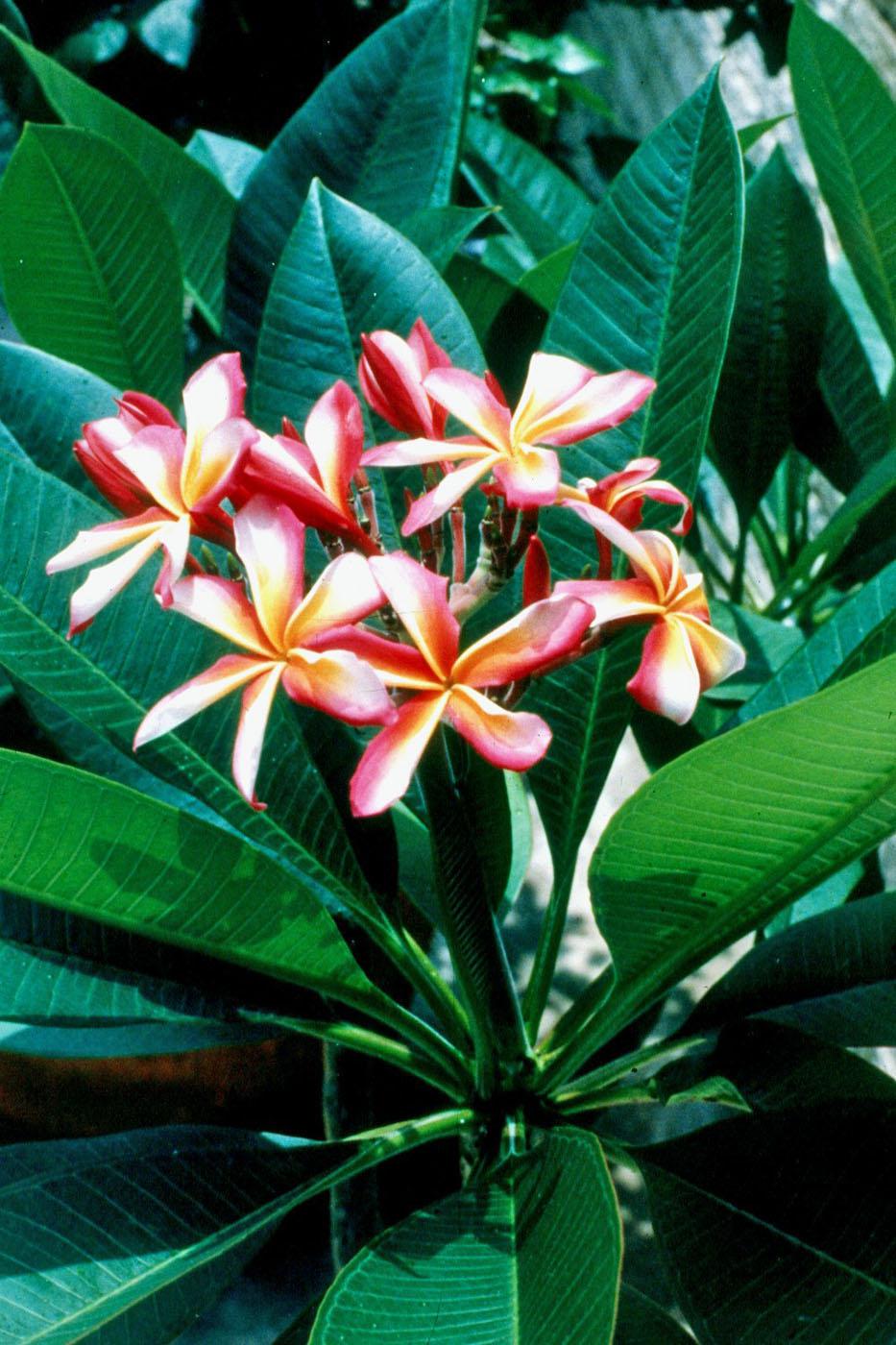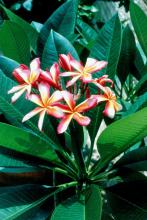Information Possibly Outdated
The information presented on this page was originally released on July 21, 2005. It may not be outdated, but please search our site for more current information. If you plan to quote or reference this information in a publication, please check with the Extension specialist or author before proceeding.
Plumerias provide Hawaiian beauty
By Norman Winter
MSU Horticulturist
Central Mississippi Research & Extension Center
Mississippi is a long way from Hawaii, but we still can enjoy a special Hawaiian flower in our landscapes.
Most people are familiar with the tradition of giving floral necklaces called leis to visitors to Hawaii. The flower used most commonly is a plumeria, also called frangipani. The plumeria has a tantalizing fragrance and commands attention whether grown in a container or the landscape. Once you start growing it, you will become hooked.
Richard and Wanda Dobbs, owners of Lei Tropicals in Gulfport, were so passionate that they turned their hobby into a business. They offer these exotic plants at garden and patio shows, as well as at their home location.
If you talk to Richard or someone with one of the plumeria societies, they will tell you this is the easiest tropical to care for and grow. How easy? So easy that anyone can do it.
Would you believe the secret to its success is neglect? Well, sort of. The really neat thing about the plumeria is that most of the plants are deciduous, meaning they lose their leaves in the winter. Actually, they start dropping leaves in the fall before the first freeze, so they are already on the road to a deep winter sleep.
So, from the 40-degree days of October to the first warm days of April, they simply want to be stored in a non-freezing location. They need no, zero, nada water or light. Giving them a drink actually will do them harm because they can't use it.
Just think: with other tropicals, we struggle to over-winter, we guess on water and tiny amounts of fertilizer, and then we move them in and out as the weather dictates, constantly struggling with sunlight. The plumeria, on the other hand, could be stored in the attic or garage closet as long as it doesn't freeze.
Plumerias are native to tropical America and related to mandevillas, allamandas and oleanders. They are started from cuttings. During the next two to three years, they develop into small, multi-trunked trees with large, lush-looking leaves. They send up colorful bouquets of wonderfully fragrant flowers in colors ranging from white (Polynesia White) and yellow-gold (Aztec Gold) to multicolored blends like Kaneohe Sunburst, which is a floral rainbow of red, yellow and orange. Another multicolor is Kauka Wilder with fiery red and yellow blossoms.
The soil should be light, airy and very well drained, whether in a container or the landscape. Dobbs starts his plumerias off in the early spring with a super-bloom fertilizer followed by a couple applications of a slow-release blend higher in nitrogen. A dilute, water-soluble fertilizer applied every other week also would work quite well.
At any time you desire, you can take a 12-inch cutting and let it cure for a couple of weeks or longer, then plant it in moist but very well drained potting soil. Planting cuttings is easiest during the growing season. Remember that water during the dormant winter season can cause rot. Cuttings, however, are easily bundled and stored during the winter.
Although not as popular as other tropicals, it is not uncommon to find plumerias at your local garden center. Now that you know these beautiful plants are no problem during the winter, buy a few the next time you see them.



